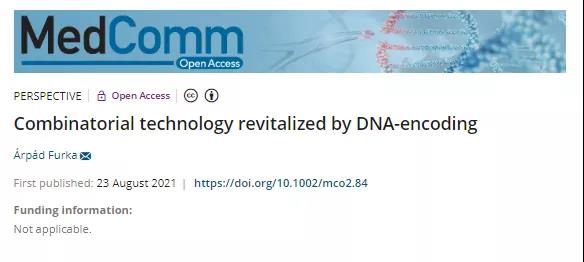MedComm | Combinatorial technology revitalized by DNA-encoding

Open the phone and scan
Combinatorial chemistry invented nearly 40 years ago was welcomed with enthusiasm in the drug research community. The method offered access to a practically unlimited number of new compounds. The new compounds however are mixtures, and methods had to be developed for the identification of the bioactive components. This was one of the reasons why the method could not providethe expected cornucopia of new drugs. Among the different screening methods, two approaches seem to offer the best results. One of them is based on the intrinsic property of the combinatorial split and pool solid-phase synthesis: One compound forms on each bead of the solid support. Different methods have been developed to encode the beads and identify the structure of compounds formed on them. The most important method applies DNA oligomers for encoding. As a second approach in screening, DNA-encoded combinatorial libraries are synthesized omitting the solid support and the mixtures are screened in solution using affinity binding methods. Libraries containing billions and even trillions of components are synthesized and successfully tested, which led to the identification of a significant number of new leads.

This short overview shows that combinatorial technology after nearly 40 years of its invention is still an eminent player in the drug discovery area.

Combinatorial technology comprises the synthesis of a mixture containing a high number of compounds in one procedure and screening the mixture also in one procedure
Article Access: https://onlinelibrary.wiley.com/doi/10.1002/mco2.84
Website for MedComm: https://onlinelibrary.wiley.com/journal/26882663
Looking forward to your contributions.


